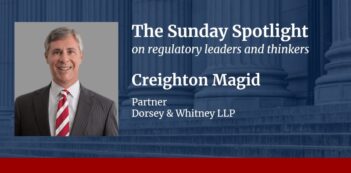
Economists’ study provides a quantitative look at the equities of environmental regulation.
A twenty-three year old federal law is now helping academics study the distributional impacts of environmental regulations.
A new paper by three university economists provides new empirical understanding about how environmental laws affect the poor. It also contributes to a debate about whether delegating authority to local governments results in regulatory capture or improves the efficiency of regulations.
The federal Clean Air Act (CAA) introduced limits one the amount of particulate matter (solid or liquid air pollutants) in the air we breathe. Key amendments to the CAA in 1990 called for EPA to adopt standards focused on particulates that were less than ten micrometers in diameter, as these tend to cause more respiratory problems than bigger particulates, which can be filtered out by the nose and throat.
Under the authority of the CAA, the Environmental Protection Agency (EPA) set goals for tolerable concentrations of particulate matter but left it up to individual states to take the lead in devising ways to achieve these goals. Compliance with the federal limits is measured by stationary air quality monitoring devices present in each county. Critically for the recent economic study, some counties have more than one monitoring device.
A county is found to be in compliance if two conditions are met. First, the three-year geometric average of the daily concentrations of regulated particulate matter for each monitoring device within county limits must be less than 50 µg/m3. Second, no monitoring device in the county can report more than one day per year where the concentrations exceed 150 µg/m3.
Under the CAA, if a county is not attaining these standards, the state in which that noncomplying county is situated must submit an implementation plan addressing how it will come into compliance. The EPA may impose financial sanctions on the state if it does not follow its implementation plan or if its monitoring devices continue to find that the county is not attaining applicable concentration standards.
The recent study reports that local authorities in counties with more than one monitoring device responded to the CAA by focusing more inspection and enforcement effort on businesses near the monitors that were not meeting the standard. Local officials also adopted local regulations, such as zoning restrictions, targeting these problem areas.
The study’s authors—Antonio M. Bento and Matthew Freedman of Cornell and Corey Lang of the University of Rhode Island—reached their conclusions through conversations with regulators and by examining prior scholarly work. The researchers also used data on particulate matter concentration levels and housing prices to conduct an econometric study examining the relationship between the two variables. Their study took advantage of data present prior to 1990, as well as the way local officials responded to the 1990 amendments, to help rule out other variables that could affect the results.
The authors’ analysis found that federal regulation primarily benefitted homeowners within a 5-mile radius of monitoring devices that reported noncompliance with the EPA’s standard. The authors estimated that home prices in these radiuses grew by $5000 on average as a result of improvements in air quality. Many low-income people lived in these areas, so the study concluded that the CAA acted in a progressive manner with respect to homeowners, distributing benefits to the poor.
The study also concluded that, for whatever reason, air quality improvements did not have as significant an impact on the price of rent as it did on home prices. While rent did rise somewhat in a tight 1-3 mile radius around a non-attaining monitoring device as the area came into compliance, there was a weaker connection. The study noted that if renters within this tight radius did not value cleaner air as much as the price their rent went up, then they suffered a loss as a result of the CAA’s approach – something which would make the law somewhat less progressive.
After assessing the distributional impacts of the CAA, the authors considered what the distribution would have looked like had the federal government delegated authority to states in a different manner. For instance, what if the federal law’s approach looked only at countywide attainment levels, say an average of the monitors, as opposed to attainment at particular monitor sites?
The study noted that local regulators have an incentive to adopt regulations that will maximize their total property tax receipts. Furthermore, a percentage increase in wealthy people’s homes would net more tax revenue than a similar percentage increase in the value of a poor person’s home. If it did not matter where a county’s reductions came from, local officials might be tempted to focus on reducing concentration levels in affluent areas as opposed to the poorer ones that are more seriously polluted.
At the same time, local regulators may be more efficient at imposing rules on their communities than a distant administrative body would be.
By focusing on the data solely from monitoring devices, rather than countywide measurements, the CAA effectively balanced these concerns, according to the study’s authors.
The authors laud the clean air law’s monitor-based delegation approach for maintaining the progressivity of the regulation while still taking advantage of the efficiencies offered by local control. The authors indicate that the CAA serves as a useful example for how much authority regulators should delegate to local governments when there is a tradeoff involved between efficiency and equitable concerns such as environmental justice.



